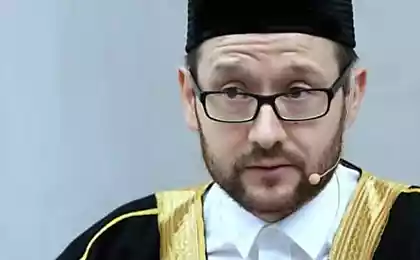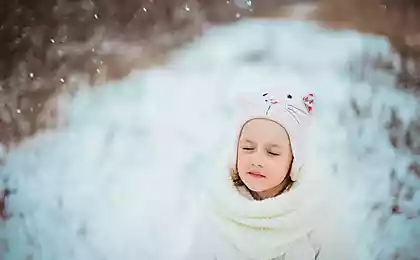646
The Chemistry of Intoxication or What We Don't Know About Alcohol

To defeat the enemy, you need to know him. The same goes for the enemy of our society, drunkenness. It is not enough to convince that drinking is harmful, you also need to explain why. Modern studies of physiologists, biochemists and doctors reveal many important aspects of the mechanism of action of alcohol on the body, allow us to understand the causes of pathological adherence to alcohol.
Alcohol enters the bloodstream.
Ethyl alcohol due to the small size of the molecules and some physical properties perfectly mixes with water and dissolves well in fats. That is why alcohol so easily passes through biological membranes: it begins to be absorbed through the mucous membrane already in the mouth, and then in the stomach and intestines, and very quickly enters the blood, with which it spreads throughout the body. But as soon as alcohol enters the body, its decomposition begins - under the action of enzymes, it turns into water and carbon dioxide. The bulk of alcohol entering the body (100 mg per hour per kilogram of body weight) is processed in the liver, only 2-5% of it is excreted in its pure form through the kidneys, sweat glands and lungs (with exhaled air). From the ratio of these two processes - the intake of alcohol in the body and its destruction - depends on the alcohol content in the blood, and therefore its intoxicating effect on the brain. Muscle tissue retains alcohol, and it is either oxidized in it (by unknown ways for us yet), or immediately sent to the liver for processing. Fat cells behave differently: alcohol accumulates in them, dissolving in fats, and avoids rapid destruction. Therefore, the more muscle mass and the less fatty tissue in the body, the lower the concentration of alcohol in the blood and the weaker its effect on the brain.
Especially quickly alcohol is absorbed if it is taken on an empty stomach - without snacks. On the contrary, abundant food, primarily meat, significantly slows down the absorption process and reduces the alcohol content in the blood by almost half. Apparently, the thing here is that digestive products, which also penetrate the blood through the same mucous membrane, prevent alcohol from being absorbed, competing with it for the right to pass through membranes. The degree of intoxication and the emotional state of a person strongly depends. On the one hand, negative emotions (grief, depression) seem to accelerate the absorption of alcohol and increase intoxication. But on the other hand, absorption can slow down under the influence of very strong emotions – anger, great joy, etc. We still know very little about the chemical side of such mental states. One can only assume that depressed mood somehow facilitates the passage of alcohol through biological membranes and possibly makes it difficult to process. Strong emotions cause a sharp narrowing of blood vessels in the stomach and intestines, less blood passes through them, and the intake of alcohol naturally slows down.
The rate of absorption of alcohol depends on its concentration in drinks. The same amount of alcohol in the form of beer (5-6%) or grape wine (9-20%) acts on the body much weaker than in the form of forty-degree vodka: with a large dilution, alcohol enters the blood more slowly and most of it manages to collapse before reaching the brain. But if at the same time with alcohol in the stomach gets carbon dioxide (whiskey with soda or, say, vodka with beer), it irritates the mucous membrane of the stomach and intestines, blood flow to it increases, and the rate of absorption of alcohol increases.
Short-term benefits
Sometimes alcohol is called a stimulant: it seems that people from it become livelier, more sociable, more energetic. Indeed, a relatively small dose of alcohol stimulates the activity of the body: the heartbeat slightly increases, the blood vessels of the skin and limbs expand, and blood pressure decreases. The state of tension, depression disappears. “Stack of vodka” before lunch increases appetite, irritating the mucous membrane of the stomach and increasing the release of gastric juice.
Of course, such a stack of vodka does not create an immediate threat to the body. But this momentary “benefit” of alcohol can turn into a terrible evil for the body if a stack becomes a habit. Slowly, a person drinks more often, he begins to tolerate large doses of alcohol, which previously caused him poisoning. All this eventually leads to a serious illness - alcoholism.
Stages of intoxication
Alcohol is a specific nerve poison. Well soluble in fats, which are especially rich in brain tissue, it accumulates in the brain in larger quantities than in other organs. The effect of alcohol on the brain directly depends on its concentration in the blood: as it increases, the higher centers of the brain are first paralyzed, then the intermediate and, finally, the lower ones are inhibited, in charge of which are the main vital functions of the body.
With mild intoxication - the concentration of alcohol in the blood is less than 0.05% (on average this corresponds to 100 ml of vodka drunk) - a person relaxes, calms down. At a slightly higher concentration (0.05%), the activity of the brain centers that control behavior, especially the centers of attention and self-control, is suppressed. The stimulating effect of alcohol begins to affect: a person artificially raises his mood, there is talkativeness, excessive revitalization, gradually loses reasonable control of the intoxicated over his actions and the correct orientation in reality is violated. As intoxication increases - with an increase in the concentration of alcohol in the blood to 0.1% (200 ml of vodka) - intoxication of moderate severity occurs. The centers of the cerebral cortex come into chaotic excitation, the underlying subcortical parts are released from under their regulating influence, emotional perception changes (sometimes in such cases they talk about the “release of base instincts”). The behavior of a person in this state largely depends on his temperament and character characteristics: some feel anxious, others fall into unreasonable cheerfulness and playfulness, giving way to excessive sensitivity with resentments and tears, others have suspicion, irritability and aggressiveness. With an even higher content of alcohol in the blood (0.15% - 300 ml of vodka), the activity of the motor centers of the brain is suppressed - a person begins to lose control of his muscles. And with an alcohol concentration of 0.25-0.3% (400-600 ml of vodka), severe intoxication occurs - a person completely loses orientation, feels an irrepressible desire to sleep, falls into unconsciousness.
And in the last place, the vital centers located in the medulla are suppressed: with a concentration of alcohol in the blood of 0.5% (an average of 1000 ml of vodka), the respiratory center located here is blocked, and the state of numbness turns into death.
Alcohol and mediators
The effect of alcoholic beverages on the psyche is described in hundreds of literary works and clinical studies. However, we still know very little about the specific points of action of alcohol, about the changes in the activity of nerve cells caused by it, to which, in the final analysis, these well-known psychic phenomena are reduced.
The fact is that there are still significant gaps in our knowledge of the chemistry of normal mental activity and emotions. Only in recent years have we begun to talk about the complex processes of the human psyche in the language of physiology, anatomy, biochemistry and even mathematics. The “atom” of our entire nervous system is a nerve cell – a neuron that has the ability to conduct a nerve impulse – an excitation wave based on complex electrochemical processes. A nerve impulse can be transmitted from one neuron to another in contact with it. However, this contact is not immediate: “at the junction” of neurons – in the synapse – they are separated by a slit about 200 angstroms wide. The electric wave of excitation cannot cross this gap, so special mediators are also involved in the transmission of nerve impulses in synapses.
At the moment when the nerve impulse arrives at the end of the neuron on one side of the synapse, here from special bubbles inside the neuron, molecules of the mediator substance are released; they “force” the synaptic gap, penetrate the neuron lying on the other side of the synapse, and cause electrochemical processes in it, leading to the appearance of a nerve impulse. Now the “reborn” impulse can continue its movement along the next neuron.
This is only a general picture of the transmission of a nerve impulse from one neuron to another, many details of it we do not yet know. Neurophysiological studies constantly bring new information about the work of nerve cells. For example, relatively recently it turned out that in addition to the synapses through which excitation is transmitted, there are inhibitory synapses: when they receive a nerve impulse from another neuron, the excitability of the neuron decreases. These synapses are served by special inhibition mediators, among which gamma-aminobutyric acid (GABA) is of great importance; its action is opposite to the action of such excitation mediators as adrenaline, norepinephrine, acetylcholine.
How does alcohol affect this complex mechanism?
More and more evidence is accumulating that it directly affects the exchange of mediators. For example, the state of excitation arising under the influence of relatively small doses of alcohol is associated with the release in the brain tissues of the excitation mediator - adrenaline. With stronger intoxication, the content of norepinephrine and serotonin mediators decreases - this, apparently, explains the complacent mood that appears "in drinking." A further increase in blood alcohol concentration contributes to the accumulation of serotonin, which causes depression. In acute alcohol poisoning in the brain of experimental animals, a sharply increased content of GABA, a inhibition mediator, was found. Perhaps this is due to the development of the so-called protective inhibition: turning off the nerve cells of the cerebral cortex and falling into a state of deep sleep can to a certain extent protect them from the harmful effects of alcohol.
However, we do not yet know why and how alcohol causes such changes in the exchange of mediators. Apparently, alcohol molecules can interact with so-called macroergic compounds, which serve as a source of energy for all intracellular processes, including those involved in the transmission of nerve impulses. Alcohol can also bind to the enzyme adenosine triphosphatase, which decomposes macroergic compounds with the release of energy. But these are only the most general assumptions – the full picture of the process is unclear to us.
And about the very metabolism in a normal nerve cell, we have rather scant data. Suffice it to say that the important role of certain chemical factors in the activity of brain cells was first discovered by observing changes arising under the influence of alcohol. And the intermediate stages of a complex process are almost completely not studied, at one end of which changes in the micro-quantities of mediators, and at the other - disturbances in the human psyche, changes in his mood and behavior as a whole.
Why do you get hungover?
The effect of alcohol is manifested not only at the molecular level, at the level of biochemical and electrochemical processes occurring in the nerve cell and synapse. Neurophysiological studies indicate that under the influence of alcohol, other disorders of the body, and primarily the brain, occur.
The brain, more than all other tissues, needs uninterrupted and abundant oxygen supply. Alcohol poisoning reduces the intensity of blood circulation and respiration in the brain. Most likely, under the influence of alcohol, the capillaries of the brain are destroyed: experiments have shown that a drunken person has a large number of small hemorrhages in the brain and an even larger number of vessels become clogged. This deprives nerve cells of both nutrition and oxygen. Under normal conditions, oxygen starvation of nerve cells manifests itself in general lethargy, a decrease in the ability to concentrate, headache. It is this condition of the nerve cells, and probably the poisoning of the brain by the decay products of those of them who died, unable to withstand the lack of oxygen, that explains, apparently, the famous morning hangover with headaches, fatigue, etc. (we are not talking here about the “hangover syndrome” – an irresistible craving for alcohol, characteristic of chronic alcoholics; other mechanisms are involved).
There is no doubt that such severe tests that fall on the share of nerve cells of the brain lead to their premature wear, accompanied by disorders of higher nervous activity. However, the human brain contains billions of nerve cells, and if even a few thousand of them are destroyed from time to time, this does not lead to noticeable changes. But unlike all other nerve cells, they cannot regenerate. And if a person drinks systematically for years, then in the end the accumulation of these small changes leads to the most serious consequences.
Snack facts
Narcotics turning into paralysis
Alcohol is a drug. As with other drugs, in its effect on the nervous system, three consecutive stages can be distinguished: arousal, anesthesia, paralysis. But unlike most drugs used in medicine, in alcohol, the interval between the stage of anesthesia and the stage of paralysis when taking large doses is very short. That is why ethyl alcohol has not found wide application for surgical anesthesia: it, as doctors say, too small therapeutic breadth. In other words, the concentration of alcohol that causes paralysis is only not much higher than the necessary amount of anesthesia, which means that even a small overdose is dangerous.
Why are you two?
There are many jokes and anecdotes about alcoholic diplopia - "double vision." This phenomenon can be observed in sober form. If, looking at an object, shift the pressure of one eye, the visible image of the object immediately doubles. This is because the visual axes are shifted and the image hits asymmetrical places in the retina of both eyes. The visual axes can also shift due to a temporary violation of the function of the oculomotor muscles, which occurs as a result of alcohol intake, especially strong drinks with a significant content of fusel oils (samogon, chacha, etc.). The toxic effect of alcohol creates a focus of inhibition in the oculomotor center of the brain, the eye muscles contract weaker, and a person begins to "double in the eyes."
First the first and then the ambulance.
Acute alcohol poisoning is life threatening. If a person is still conscious, the main task of first aid is to act on his respiratory center. To do this, a piece of cotton candy is moistened with ammonia and from time to time given to inhale its vapors. To alleviate the condition of the poisoned person, it is necessary to force him to drink at least five glasses of boiled water at room temperature, adding two tablespoons of drinking soda to each for better removal of mucus. Then cause vomiting, pressing a spoon shard on the root of the tongue, give you to drink hot tea or coffee. If the poisoned alcohol lost consciousness, it is necessary to call an ambulance. Before the arrival of the doctor, it is necessary to put the unconscious person on the side with the lowered head (this prevents mucus and vomiting from entering the respiratory throat). The tongue should be brought out to prevent it from sinking down the throat.
Source: Chemistry and Life, 1974
P. S. And remember, just by changing our consumption – together we change the world!
Source: http:// "Science-Fact"























